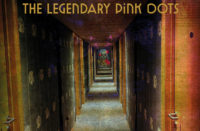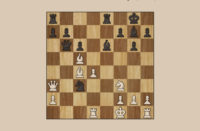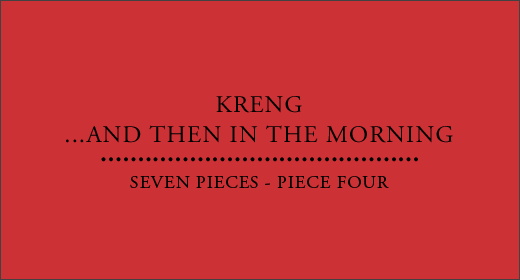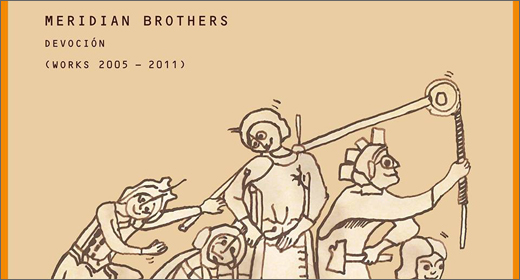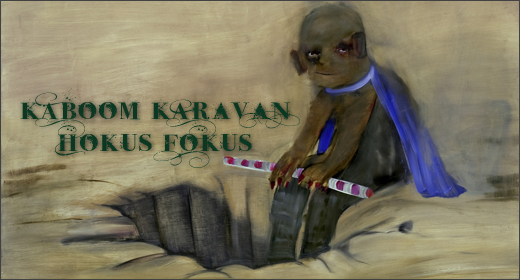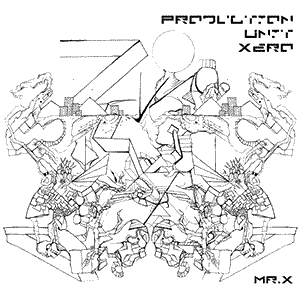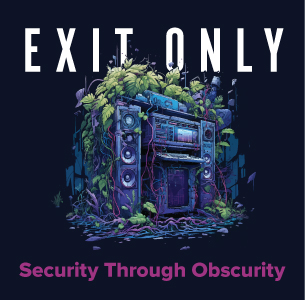As we approach the end of 2012 it’s time for all those lovely independent record labels to indulge in fierce session of one-upmanship, pulling out all the stops for a flagship final release of the year. Unfortunately for any competition, Erik Skodvin’s Miasmah imprint has already set the bar quite ludicrously high with a box set that not only marks the return of one of the label’s most celebrated artists but also represents its most epic undertaking to date.
[Release page] Works For Abattoir Fermé 2007 – 2011 is the latest opus by Kreng (Pepin Caudron), a mammoth four LP set plus ten-inch EP. Kreng’s first two albums represented something of a high watermark for Miasmah, his debut L’autopsie Phenomenale de dieu embracing a movie-soundtrack framework with eighteen short tracks of creeped out gothic horror, and sophomore album Grimoire relaxing the pace a little to explore more long-form and altogether more arcane, sorcerous movements and motifs. Neither of these compare to the sheer scale this release, however. Each of the extended two-track LPs were composed by Caudron as a soundtrack to one of extreme theatre company Abattoir Fermé’s avant-garde productions, and yet it is very hard to resist the temptation to consider them as a single, extended eight-track album when presented in this context.
Since a release of this magnitude is something of an endeavor for an independent imprint like Miasmah, and that the physical box set represents a significant outlay for the consumer, it would be remiss not to comment on the stellar presentation. Housed in a medium-weight, silver-embossed, black lidded box you will find the four LPs in full-colour, 3mm spined sleeves with black paper inners, each of which works as a sort of miniature Abattoir Fermé theatre programme, replete with promo blurb, a description of each piece, press quotes, credits and three disturbing, monochrome stills from the performances. Every copy also comes with an individually numbered, custom-printed card with mp3 download code. Exclusive to the vinyl box-set is the Monster 10″ EP, in another full-colour sleeve, with cinematic poster-style artwork (including ‘R’ rating!) that acts as promotional material for the Abattoir Fermé TV series.
Given that it’s also possible to download digital versions of the individual albums individually as well as in a complete bundle, what follows is a similarly discrete look at each individual work. Suffice it to say there’s something for everyone with a dark side here: dark ambient, drone, modern-classical and avant-garde. So far, Kreng can simply do no wrong.
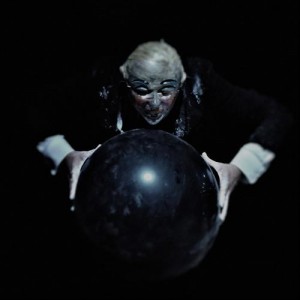 Tourniquet ::
Tourniquet ::
Abattoir Fermé’s silent theatre piece Tourniquet was inspired by modern day exorcisms, evoking the history of a house still occupied by three spirits, with Kreng’s soundtrack representing an invisible fourth character. Focusing on the hypnotic, on rituals and trance states, it is therefore only fitting that Tourniquet unfolds at an almost glacial pace. The effect this must have had on theatre audiences must have been truly entrancing and it is definitely recommended for lovers of dark ambient and spellbinding drone music.
“Tourniquet (Part One)” consists of a single subterranean bass drone, lower-register strings and what sounds like an endlessly-distended, funereal church bell striking, which lurks at the periphery of one’s hearing, the grisly details slowly picked out by a growing corpse-light over twenty-four sickly, helpless minutes. The scale of it is epic in every sense, offering up one of those rare experiences whereby one doesn’t realize how vital it is until it has passed.
“Tourniquet (Part Two)” begins with a suspense filled ten minutes of room-shaking, almost tribal bass drums, floating strings and a nerve-shredding, penetrating squeal before dissolving back into the haunting drone from the first part, this time joined by the paroxysms of a borderline evangelical exorcist as he attempts to cast out the evil spirits. In the wrong hands this could have been incredibly corny, but Caudron has a way with these things, and he has used just the right samples pitched at precisely the right intensity to create a genuinely uncomfortable and affecting experience. Stunning.
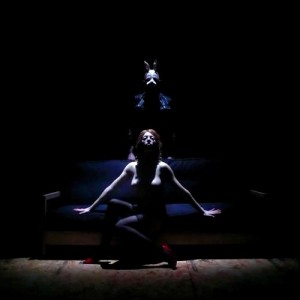 Mythobarbital ::
Mythobarbital ::
The mood takes a more classical, cinematic turn on the suspenseful chiller Mythobarbital, a very heavily edited version of which appears on L’Autopsie phenomenale de dieu. Abattoir Fermé’s production is once again about three characters, who find themselves numbed by the repetition of normal, day-to-day existence, escaping instead into dark fairytale and fantasy worlds. In “Part One,” sliding strings and dramatic stabs take centre stage over a looped, floor-shaking heartbeat boom, a spectral crooning creeping like a dread-mist through the pitch-dark soundstage. A full eleven minutes in there’s an unexpected electronic twist as all of a sudden we’re transported to what could easily be a Richard H. Kirk track from 1994’s Virtual State, looped analog whistle and effects weaving through the string swells.
“Mythobarbital (Part Two)” opens with foggy swells of fuzzy horns and organ drones that slowly melt into a swirling ether, then gradually morph into grandiose orchestral blasts. Sadly this is the first track that suffers when divorced from Abattoir Fermé’s visuals, the latter ten minutes of the track little more than the first part’s simple, subterranean bass thump and the almost imperceptibly far-off moan of a tormented crypt field. Walk out of the room and you may even forget the track is still playing. Then again, come back in at your own peril.
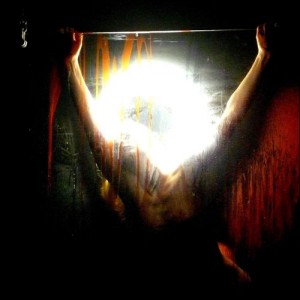 Snuff ::
Snuff ::
True to its provocative title, this is the most frantic, dense and borderline frightening installment in the set, but puts you at ease from the outset with a shrill whistle, gentle strings and a low electronic hum that picks up where the second half of “Mythobarbital (Part One)” left off. These are soon ripped to shreds by thunderous sheet-metal, and we then enter bouts of military, rolling drums and string stabs. It also features a sequence that was edited and inserted into Grimoire under the name “Ballet van der Bloedhoeren,” that summons and repeats a snatch of string-led classical music, slowly distending it each time until it reaches breaking point.
Snuff is perhaps the most difficult musical experience to reconcile with what could possibly be happening on-stage, the movement like an army mustering its forces for battle, seemingly have little to do with what the liner notes tell us are a piece about dark, hidden passions and murder. And though “Snuff (Part Two)” is a quieter, more tense affair with bursts of militaristic parade music and slap-in-the-face stings, without visuals it simply doesn’t hold together like the the rest of the music here, finishing on an indulgently lengthy and quite baffling sequence of laboured panting and thumping.
 Monkey ::
Monkey ::
This one is apparently based on the debauched and depraved exploits of two “notorious” gangs of well-to-dos (the 17th Century “Merry Gang” and the 1940’s “Bundy Drive Boys”) engaged in a permanent state of excess. As one reviewer said: “they summon images that would make Sade himself blush”.
“Monkey (Part One)” opens with a sustained set-piece consisting of time-stretched and reversed, guttural piano keys, swelling bass drones and ominous, repeated thunk… a common device for setting a tense, dark and suspenseful scene. It does stall temporarily in a stretch of barely audible sub-bass drone for some minutes at its core, but this then morphs into a distorted, feral trumpeting and military drums before sliding inexorably into a dimly lit opium pulse, a dark voice enumerating body parts over and over.
Once again, the first part is a lengthy scene-setter that, deprived of visuals arguably has little place on its own, but in conjunction with the second works exceptionally well by creating an atmosphere of suspense that couldn’t be quite as fully realised on one of Kreng’s previous full length albums.
“Monkey (Part Two)” is a different beast altogether, jolting you out of your seat first with the chattering clicks of a pulse-dial telephonic apparatus, then an echoing fairytale waltz with freakshow undertones. These alternate several times, an almost optimistic moment in a sea of haunted despair. Frenzied, saw-like orchestral strings follow, swinging between discord and harmony but building to an intense crescendo, and then all these elements are mixed together with zithering string shrieks. Deeply, deeply wrong. Then, out of nowhere comes a long passage of dark, pulsing industrial techno, a final system-shock that concludes this box set in completely remote territory.
Monster! ::
Last but not least comes the box-set exclusive bonus 10″ EP featuring music taken from the soundtrack to the TV show Monster, a tribute to and pastiche of all those early lo-fi B-Movies in the “so bad they’re good” vein that continue to live in the imagination decades later. Running a total of twenty-seven minutes, it is a mini-LP by itself and every bit as eccentric and diabolical as Kreng’s other output. When you see the “trailers” for the TV series this music accompanies, you’ll understand why. Horror string zithers, operatic vocal wails and crashing percussion litter the choppily edited “Monster Opening Credits” and “Hitler Needs Woman,” seventies tom-toms and belting percussion rattle through the apocalyptic zombie-fest of “The Dying Dead” and “Color Me Crazy.”
Things get blood-chillingly weird in “Tine’s Exorcism” as the retching, bile-choked ravings of some evil spirit are expelled from the world before finally turning genuinely bonkers in “It Came From The Planet” which, after the drum sting from opening theme music of Captain Scarlet, is followed by a slew of archival TV series musical stings and references. The whole thing is an assault on the senses and quite literally bewildering, and to make things even more confusing, the closing “Monstro” features Abattoir Fermé’s director shouting, trumpeting, corpsing and giggling about Monstro, the poorly-realized “man-in-a-suit” giant monster of the piece. He’s destroying the city!
Works For Abattoir Fermé 2007 – 2011 is available on Miasmah. [Release page]







